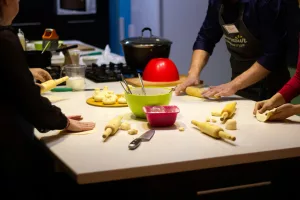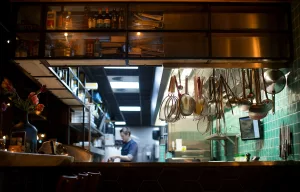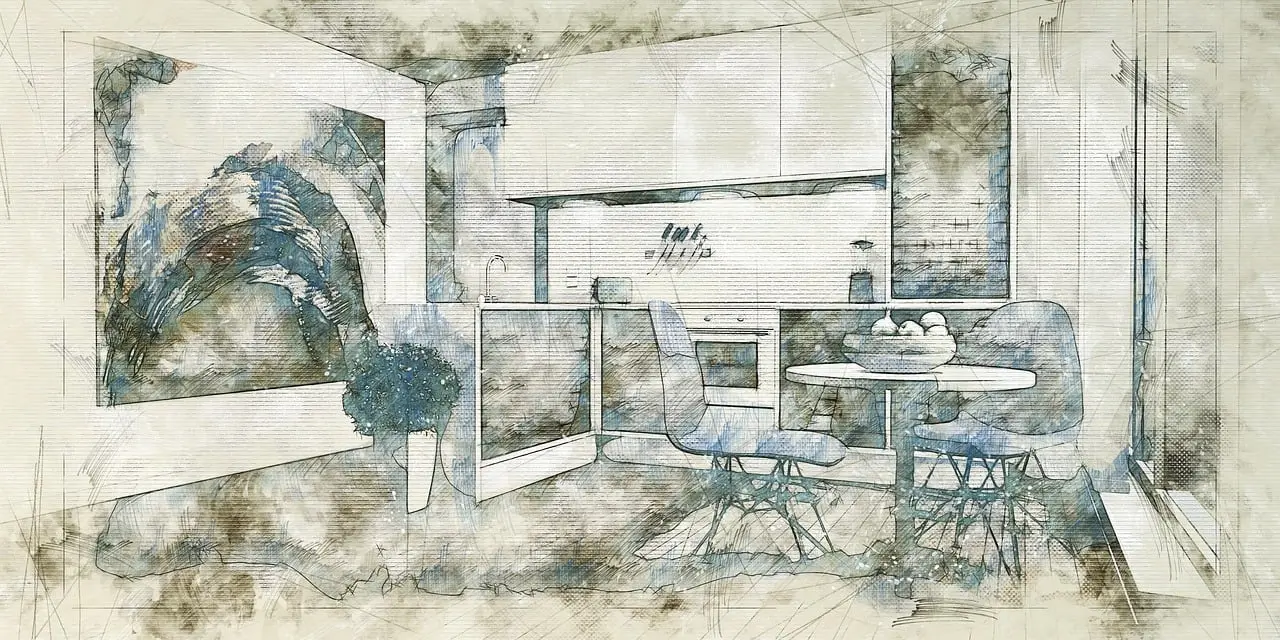The Rise of Ghost Kitchens in the UK
Table of Contents
In a rapidly evolving culinary landscape, ghost kitchens have emerged as a disruptive force, reshaping how we perceive and experience food delivery. As the demand for convenience and variety continues to soar, ghost kitchens have swiftly risen to prominence, particularly in the UK, revolutionising how we enjoy our favourite meals.
What are Ghost Kitchens?
Ghost kitchens, virtual kitchens, cloud kitchens, or dark kitchens represent a novel food preparation and delivery approach. Unlike traditional restaurants, these establishments operate solely for delivery and takeaway orders, devoid of dine-in facilities. They function as centralised hubs where various culinary concepts come to life, catering exclusively to the burgeoning demand for online food ordering.

The Evolution of Food Delivery
The history of food delivery services dates back to antiquity, with the earliest recorded instances dating back to Ancient Rome and China. However, technological advancements have truly transformed the landscape in recent decades. The food delivery experience has been transformed by mobile applications and online platforms, resulting in the emergence of ghost kitchens.
Growth of Ghost Kitchens in the UK
The UK’s embrace of ghost kitchens mirrors a global trend, with a significant uptick in their proliferation witnessed in recent years. According to market research, the ghost kitchen sector in the UK has experienced exponential growth, driven by changing consumer habits and the unparalleled convenience these virtual culinary hubs offer.
Consumer Behavior Shifts
The seismic shift in consumer preferences towards online food ordering has driven the ascendancy of ghost kitchens. In an era of hectic lifestyles and digital connectivity, consumers increasingly prioritise convenience, affordability, and variety in dining choices.
The outbreak of COVID-19 led to a significant surge in the need for contactless food delivery services. However, the trend towards such services had already risen before the outbreak.
Here’s The Most Profitable Restaurant Model In The UK Right Now
The Business Model Behind Ghost Kitchens
One of the most compelling aspects of ghost kitchens is their cost-effective business model and scalability advantages. Aspiring restaurant owners can focus on culinary innovation and market expansion by eliminating the expenses of maintaining a traditional brick-and-mortar establishment. This way, they can channel their resources towards business growth without worrying about overhead costs. Moreover, the modular nature of ghost kitchens enables operators to swiftly adapt to changing consumer preferences and scale their operations with ease.
The Rise of Virtual Kitchens in the New Era of Dining
In today’s difficult economic climate, restaurants face a formidable challenge—attracting enough customers to sustain their operations. This struggle is anticipated to persist as eating habits undergo a profound transformation. Nowhere is this shift more apparent than in urban centres, where the surge in remote work has decimated foot traffic in once-thriving office districts.
The Evolution of Virtual Kitchens
Gone are the days when dark kitchens operated in obscurity. A metamorphosis is underway, with virtual kitchens and cloud kitchens poised to shed the ominous connotations associated with the term “dark.” This rebranding reflects a broader trend reshaping the gastronomic scene.

Seizing Opportunities in a Dynamic Market
The past few months have witnessed a seismic overhaul of the food delivery ecosystem, marked by a flurry of fundraising activities. Existing players must pivot to adapt, while new entrants stand to capitalise on the burgeoning opportunities in this dynamic landscape.
Dark Kitchen Investors
Venturing into dark kitchens is akin to embarking on a startup journey. Seed investors like Hoxton Ventures have dived into this burgeoning sector, propelling its rapid expansion. In July 2020, the UK startup Karma Kitchen accomplished a remarkable feat by securing over 300 million euros in a single round of funding. Despite its relatively recent establishment in 2018, the company has swiftly gained prominence by offering kitchen spaces tailored for restaurants and other food businesses. This service has become increasingly vital in catering to the burgeoning demand within the burgeoning ‘ghost kitchen’ market.
Dark Kitchen Food Delivery Platforms
Established food delivery platforms such as Supper London, Eat, Uber Eats, Deliveroo, and FoodHub are poised to become indispensable allies for dark kitchen operators, facilitating seamless order fulfilment and customer engagement. These partnerships provide a platform for ghost kitchens to showcase their menu items to a vast audience, capitalizing on the growing demand for online food delivery services.
Related Articles:
Social Media Strategy For Your Restaurant
How To Become A Restaurant Manager
Dark Kitchen Software Solutions
Optimising the food delivery process lies at the heart of a successful dark kitchen operation. Selecting the right software is paramount, with options like BistroHub streamlining order management across multiple delivery platforms while offering customisable features to enhance efficiency.
Dark Kitchen Rental Services
Entrepreneurs exploring dark kitchen ventures have many options, from leasing commercial spaces to fully equipped kitchen co-working spaces. Providers like Dephna offer comprehensive solutions, spanning commercial kitchen rentals, cold storage facilities, and office spaces.
Dark Kitchen Location Strategy
Selecting an optimal location for your dark kitchen is crucial for success. Delivery service ranges covering densely populated areas are also vital, and it’s equally important to evaluate the competition to establish a unique market position.
Dark Kitchen Brand Development
Dark kitchens are fertile ground for cultivating diverse food brands tailored to niche tastes. From innovative concepts like Kbox and established favourites like Taster, the possibilities for culinary innovation are limitless.
Embracing Innovation for Culinary Success
The rise of dark kitchens heralds a new culinary innovation and entrepreneurship era. Aspiring restaurateurs can confidently and creatively navigate the evolving gastronomic landscape by embracing change, leveraging technological advancements, and adopting strategic business practices.
Partnering with Delivery Platforms
Strategic partnerships with food delivery platforms have emerged as a cornerstone of the ghost kitchen business model. By leveraging these platforms’ extensive reach and logistics infrastructure, ghost kitchens can tap into a broader customer base while streamlining order fulfilment processes. However, navigating the dynamics of these partnerships requires careful consideration of factors such as commission fees, branding strategies, and operational efficiency.
Challenges and Opportunities: Regulatory Considerations
While the rise of ghost kitchens presents unprecedented culinary innovation and entrepreneurship opportunities, it also brings regulatory challenges and compliance complexities. Adherence to food safety standards, zoning regulations, and licensing requirements is paramount for ghost kitchen operators to maintain consumer trust and operational integrity. Furthermore, navigating the evolving regulatory landscape necessitates proactive engagement with relevant stakeholders and industry watchdogs.
Innovations and Adaptations
Ghost kitchens rapidly embrace innovation and technological advancements in the quest for sustained competitiveness. These businesses are pioneers in culinary innovation, constantly pushing boundaries in food delivery through automated kitchens powered by AI or advanced drone delivery systems. Moreover, opportunities for diversification and expansion abound, with ghost kitchens exploring new revenue streams and culinary concepts to cater to evolving consumer tastes.

Conclusion
The emergence of ghost kitchens is a turning point in how we think about and enjoy food in the United Kingdom. In summary, this trend is changing our approach to food consumption. From their humble beginnings as virtual culinary experiments to becoming integral pillars of the food delivery ecosystem, ghost kitchens have redefined the boundaries of culinary entrepreneurship and consumer convenience.
As we navigate an era defined by digital connectivity and changing lifestyles, ghost kitchens offer a tantalising glimpse into the future of gastronomy, where innovation meets accessibility and culinary boundaries are continuously pushed and reimagined. So, whether you’re craving traditional comfort food or eager to explore bold new culinary frontiers, ghost kitchens stand ready to satisfy your appetite, one delicious delivery at a time.

FAQ (Frequently Asked Questions)
What exactly is a ghost kitchen?
A virtual kitchen, also called a ghost or dark kitchen, exclusively serves delivery and takeout orders and has no provisions for dine-in customers.
How do ghost kitchens differ from traditional restaurants?
Unlike traditional restaurants, ghost kitchens focus exclusively on food delivery and takeaway orders, eliminating the need for dine-in facilities and front-of-house staff.
Are ghost kitchens only focused on delivery, or can customers dine in?
Ghost kitchens are primarily geared towards delivery and takeaway orders, although some establishments may offer limited seating or pickup options.
What types of cuisines are typically offered by ghost kitchens?
Ghost kitchens boast diverse culinary offerings, spanning global cuisines, niche specialities, and innovative concepts tailored to meet diverse consumer preferences.
How have ghost kitchens impacted the restaurant industry in the UK?
The proliferation of ghost kitchens has reshaped the restaurant landscape in the UK, offering aspiring restaurateurs a cost-effective avenue for culinary entrepreneurship and catering to changing consumer preferences for convenience and variety.
What are some challenges faced by ghost kitchen operators?
Ghost kitchen operators contend with regulatory complexities, logistical challenges, and intense competition in the crowded food delivery market. Ensuring food safety compliance, maintaining quality control, and navigating strategic partnerships with delivery platforms are critical challenges operators face.
Can anyone start a ghost kitchen, or are there specific requirements?
While the barrier to entry for ghost kitchens may be lower than for traditional restaurants, aspiring operators must still navigate regulatory requirements, secure appropriate permits and licenses, and invest in kitchen infrastructure and technology.
How do ghost kitchens ensure food quality and safety?
Ghost kitchens adhere to stringent food safety standards and quality control measures to uphold consumer trust and satisfaction. Regular inspections, staff training, and compliance with hygiene protocols are integral to maintaining food quality and safety.
Are ghost kitchens environmentally sustainable?
While ghost kitchens may offer potential efficiencies in resource utilisation and waste reduction compared to traditional restaurants, their environmental impact varies depending on energy consumption, packaging materials, and delivery logistics.
What does the future hold for ghost kitchens in the UK?
The UK’s ghost kitchen industry is set to experience sustained expansion and progress in the coming years, fueled by changing customer tastes, technological advancements, and market forces. As the food industry evolves, ghost kitchens are becoming increasingly important in shaping the future of food delivery and culinary experiences.

